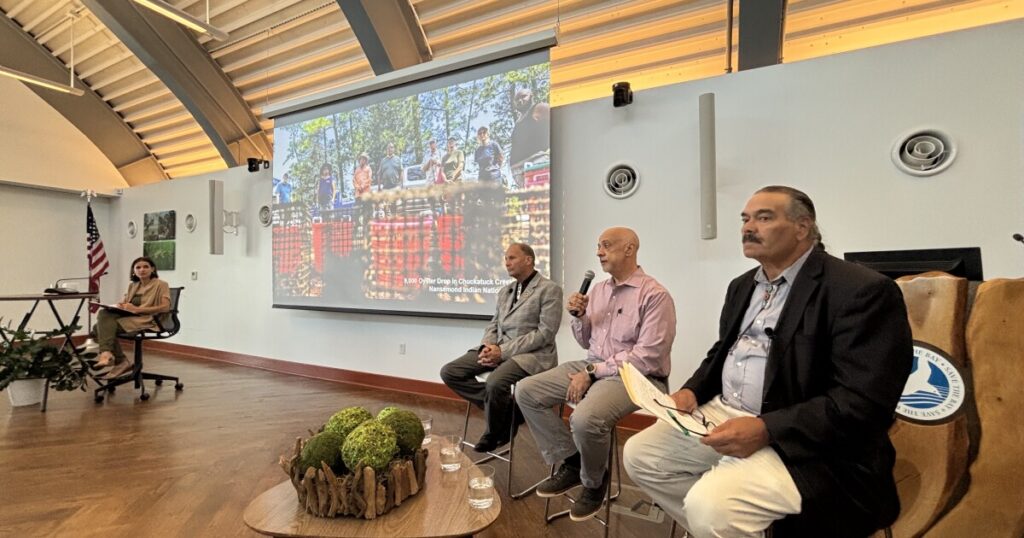Preserving Heritage: Virginia’s Indigenous Communities Confront Environmental Challenges
For millennia, Indigenous communities have thrived on the lands and waterways of Virginia, enduring the trials of wars, natural disasters, and expanding urbanization. Yet today, tribal leaders voice concerns over environmental issues like flooding and shoreline erosion, which threaten their ancestral lands and resources.
“We’re seeing an impact that is different in my mind than when I was growing up,” remarked Reggie Stewart, second assistant chief of the Chickahominy Indian Tribe. “That is a change in our climate, and I think it is having an effect on our properties, and also our citizens.”
Stewart, alongside representatives from the Nansemond Indian Nation and the Upper Mattaponi Tribe, shared insights during a discussion at the Chesapeake Bay Foundation’s climate lecture series, held at the Brock Environmental Center in Virginia Beach.
“Indians were the original caretakers of the Chesapeake Bay,” noted Christy Everett, the Bay Foundation’s Hampton Roads director. “Their resilience is a testament to their strength and a vital part of the American story. Today, Indian leaders and communities are at the forefront of environmental justice.”
The vulnerability of Indigenous communities to climate change is underscored by scientists in the National Climate Assessment, a comprehensive government report on the climate’s impact in the U.S. Predictions suggest a three-foot sea-level rise by 2100 could destroy over 13,000 archaeological sites while directly affecting modern Indigenous communities in Virginia and the Southeast.
“Settler colonialism and climate change are forcing displacement once again, causing stress and grief,” officials reported. “Land dispossession in the Southeast has impeded Indigenous peoples from weathering climate hazards and deprived them of environmental amenities.”
Coastal Virginia leaders are witnessing these changes firsthand. Stewart recounted the Chickahominy Tribe’s recent reacquisition of a 900-acre riverfront, Mamanahunt, a historical site of a 1614 treaty. The land, however, is already feeling the effects of rising tides and erosion, diminishing its size.
Chief Frank Adams of the Upper Mattaponi Tribe highlighted the difficulties faced due to shallower waters from fallen trees obstructing navigation along the Mattaponi River. He referred to the Pamunkey Indian Tribe’s reservation, which has been listed among America’s Most Endangered Historic Places, as it continues to submerge.
Virginia’s 1924 Racial Integrity Act complicated the federal recognition process for tribes like the Nansemond, Chickahominy, and Upper Mattaponi, which finally gained recognition in 2018. This acknowledgment ensures their involvement in decisions affecting ancestral lands. For instance, the Nansemond Indian Nation had previously disputed with an energy company over a pipeline expansion, ultimately reaching a resolution.
Tribal efforts to combat environmental issues include the Nansemond’s restoration of Mattanock in Suffolk by planting trees and oyster reefs and removing invasive species. The Upper Mattaponi are educating youth on composting and participating in local fisheries research to understand the decline of species like the Atlantic sturgeon.
“Every tribe has an environmental department,” Adams emphasized, showcasing their proactive measures to safeguard their heritage and environment.
Original Story at www.whro.org
